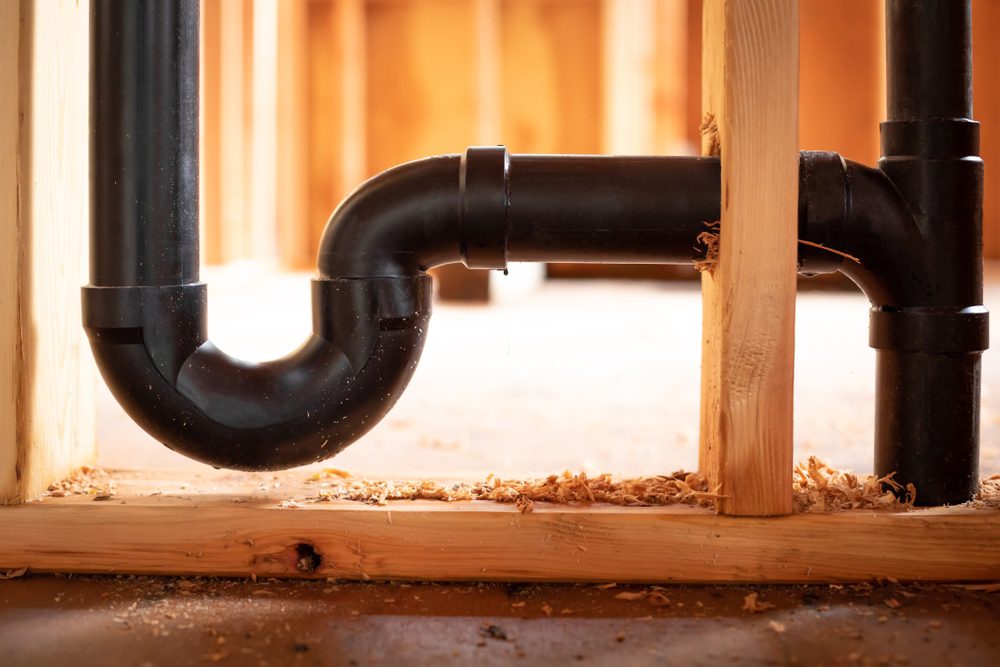Adequate Ventilation in Plumbing Systems: How It Matters
Adequate Ventilation in Plumbing Systems: How It Matters
Blog Article
We've stumbled upon the article on What Is A Plumbing Vent & How Do They Work? below on the web and decided it made perfect sense to quickly share it with you on this site.

Appropriate air flow in plumbing systems is frequently ignored, yet it is critical for preserving the performance and security of your home's plumbing. Ventilation helps regulate atmospheric pressure, protect against the buildup of harmful gases, and make certain the effective elimination of waste. In this guide, we will check out the significance of proper plumbing air flow, just how it works, and the benefits it offers your pipes system.
Recognizing Air Flow in Pipes
Air flow in pipes refers to the network of pipelines that allow air to flow through the drainage system. These vents serve multiple functions, consisting of managing air pressure within the pipelines, protecting against sewage system gases from going into the home, and aiding in the smooth flow of wastewater.
How Ventilation Works in Plumbing Solutions
Atmospheric Pressure Policy
Proper air flow preserves balanced atmospheric pressure within the plumbing system. When water streams through pipelines, it displaces air. Without sufficient ventilation, this displacement can produce unfavorable pressure, causing slow down drains or siphoning of water from traps, which can cause undesirable smells to permeate into the home.
Stopping Drain Gas Buildup
One of one of the most essential functions of pipes vents is to prevent drain gases, such as methane and hydrogen sulfide, from accumulating within the home. These gases can position significant health and wellness dangers and are very combustible. Vent pipelines allow these gases to leave securely outside.
Aiding in Waste Removal
Air flow assists in the reliable removal of wastewater by protecting against airlocks in the drainage system. When air can stream freely through the vents, it enables water and waste to move efficiently through the pipelines, decreasing the threat of obstructions and backups.
Sorts Of Pipes Vents
Main Stack Vent
The major pile vent, additionally called the vent pile, is the main vent in a plumbing system. It extends from the main drainpipe align through the roof covering, enabling gases to get away and fresh air to get in the system.
Branch Vent
Branch vents attach to the major pile vent and serve specific components, such as sinks, commodes, and showers. These vents make sure that each component has appropriate ventilation to function correctly.
Air Admission Shutoff (AAV).
An Air Admittance Shutoff (AAV) is a one-way valve that allows air to go into the plumbing system without the need for a standard air vent pipe extending through the roof. AAVs are typically used in renovations or locations where setting up a typical vent is unwise.
Indications of Poor Air Flow in Pipes.
Slow Draining Fixtures.
If your sinks, bathtubs, or bathrooms are draining pipes slowly, it could be an indicator of bad ventilation. Insufficient air circulation can develop a vacuum result, making it difficult for water to drain effectively.
Gurgling Sounds.
Gurgling noises coming from drains pipes are usually a result of air being drawn via water catches due to unfavorable pressure in the pipes. This is a clear indication of inadequate ventilation.
Unpleasant Smells.
Sewage system smells inside your home are a red flag that your pipes system is not properly aerated. This could indicate that sewer gases are not being effectively vented outside, bring about possibly unsafe conditions.
Typical Air Flow Blunders.
Inadequate Vent Sizing.
Using small air vent pipelines can cause poor air circulation and pressure imbalances in the system. It's important to make use of vents that satisfy the specific demands of your pipes system.
Improper Vent Positioning.
Putting vents too much from the fixtures they offer can lower their effectiveness. Correct positioning makes certain that air can move freely and effectively with the system.
Disregarding Code Needs.
Building regulations supply certain standards for pipes air flow. Disregarding these codes can result in a system that falls short to function appropriately and may lead to expensive repairs or carcinogen.
Benefits of Correct Air Flow.
Improved System Efficiency.
Appropriately aerated plumbing systems run extra efficiently, with less obstructions, faster draining pipes, and much less stress on the pipelines. This effectiveness expands the life-span of the pipes system.
Improved Air Quality.
By preventing sewage system gases from entering your home, proper air flow contributes to far better interior air high quality, making your living environment healthier and much more comfy.
Preventing Water Damages.
Ample air flow helps prevent water from being siphoned out of catches, which can lead to sewer gases entering the home and triggering water damage with time.
Actions to Make Sure Proper Ventilation.
Consulting Pipes Codes.
Always seek advice from regional plumbing codes when making or modifying your pipes system. These codes supply the necessary standards for correct airing vent and ensure your system fulfills safety criteria.
Normal Assessment and Upkeep.
Normal inspections can aid determine potential ventilation concerns prior to they end up being major problems. Maintenance tasks, such as cleansing air vent pipes and checking for blockages, are essential for keeping the system in good working order.
Expert Installation.
For brand-new setups or significant adjustments, it's wise to work with a specialist plumbing. They have the proficiency to make certain the ventilation system is properly designed and set up according to code.
Conclusion.
Appropriate ventilation is an essential part of any kind of pipes system, making certain that it functions efficiently and safely. By understanding the relevance of air flow, acknowledging the indications of poor ventilation, and taking steps to preserve your system, you can protect against pricey concerns and safeguard your home's air quality.
Understanding the Role of Your Plumbing Vents in the Drainage System
The plumbing system in your home is more than just the kitchen sink, toilet, and bathroom. Some problems that arise within home plumbing are hard to detect because homeowners may not understand potential causes.
One part of the plumbing system that could cause you endless problems is the venting. The drain lines that run through your home and drain wastewater need proper venting to function properly. Faulty plumbing vents can lead to several problems that require the expertise of a plumber to check them out. Before finding experienced plumbing services, there are a few things to learn about plumbing vents.
Why vents are vital
Vents in the plumbing system lead to an outside area such as the roof or the back. The function of these vents is to keep sewer gases away from the drain pipes. They also establish seals in the drainage pipes that prevent the sucking back of waste gases into the home. Venting in the plumbing system also allows oxygen to get into the drainage system, which is an essential component in the breakdown of waste matter. The vents also ensure that the air pressure within the drainage system remains balanced, facilitating the flow of wastewater.
Possible problems
When the plumbing vents are problematic, one of the consequences is imbalanced water levels in the toilet. If you notice that the levels in the toilet bowl rise and fall all the time, then there may be something wrong with the vents.
Another issue is air bubble formation within the toilet. In most cases like these, the drain pipes are not receiving enough air. Lack of air pressure equalization is what leads to water flow problems. If you come across such issues in your home, make sure you call professional plumbers, such as the ones from Perfection Plumbing & Drain Cleaning Ltd.
Potential causes
Several scenarios can lead to some of the plumbing problems that homeowners suffer because of venting. One such scenario is the use of incorrectly sized vents. Usually, vents are the same size as the drain line to facilitate proper venting. Vents that are too small will lead to some plumbing issues. Another potential cause is fixtures that are not close enough to the vents. In this scenario, air forces itself through the traps of other fixtures, leading to gurgling sounds from toilets and sinks.
Most of these problems also happen with clogged vents. Tree leaves and debris can cause clogging when they make their way down a vent. Unclogging plumbing vents is a service that you can entrust to Saskatoon plumbers. They will know how to snake down vents and remove clogging stuck in fixtures.

Do you like reading about What Is A Plumbing Vent & How Do They Work?? Write a remark below. We'd be pleased to listen to your thoughts about this post. In hopes that you come back again in the future. Are you aware of somebody who is fascinated by the topic? Why not promote it. We recognize the value of reading our article about What Is A Plumbing Vent & How Do They Work?.
Request Your Service Report this page